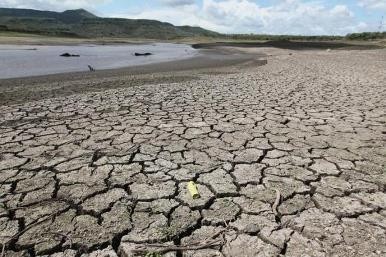The El Niño weather phenomenon has made this year the hottest on record and will make 2016 even hotter. The World Meteorological Organization (WMO) warned on Wednesday, Nov. 25, that inaction on climate change could see global average temperatures rise by 6 degrees Celsius or higher.
WMO director-general Michel Jarraud said in a news conference that the global climate summit starting in Paris on Monday, Nov. 30, can take steps to keep the temperature rise within 2C (3.6 Fahrenheit) over pre-industrial times, a target set down in 2010 to prevent a dramatic increase in extreme weather.
"But the more we wait for action, the more difficult it will be," Jarraud said.
"You have scenarios assuming very strong decisions, very quick and sharp reduction of greenhouse gases, and you have other scenarios with business as usual, where you end up with predictions of additional warming of 5, 6 degrees, maybe even more. That will very much depend on the decisions (in Paris)."
Jarraud said there was no "silver bullet" to stop climate change as he said that a strong deal in Paris would be significant as much the need for citizens to choose public transport over cars and insulate their homes, and for industry to address the sources of greenhouse gas emissions that include power stations, transport, farming, cement and fertilizers.
Jarraud also rejected the arguments of climate cynics that the science underlying predictions of man-made climate change was wrong. "It's not about believing or not," he said. "It's a matter of seeing the facts. The facts are there."
Paul Williams, climate scientist at the University of Reading, agreed. "All the thermometer readings, satellite observations, tree rings, ice cores and sea-level records would have to be wrong," he said.
WMO said that the global average surface temperatures in 2015 are likely to reach what it called the "symbolic and significant milestone" of 1.0C above the pre-industrial 1880-1899 era, and around 0.73C above the 1961-1990 average.
Jarraud attributed the 16-20 percent of the 2015 rise in temperature to El Nino, a natural weather pattern marked by warming sea-surface temperatures in the Pacific Ocean. The current El Nino is one of the most intense on record.
The report, however, said that five-year averages showed temperatures were rising regardless of El Nino or its cooling counterpart La Nina, with eight of the 10 warmest years occurring since 2005.
WMO said that the years 2011-2015 have been the hottest five-year period on record, with temperatures about 0.57C (1.01F) above the 1961-1990 reference period.
During the period, global ocean temperatures were unprecedented as several land areas broke temperature records by large margins. These areas include the continental United States, Europe, Australia, South America and Russia.
WMO warned that next year may be even warmer as levels of greenhouse gases in the atmosphere have risen to a new record every year for the past 30 years, and El Nino is likely to continue into 2016.



























